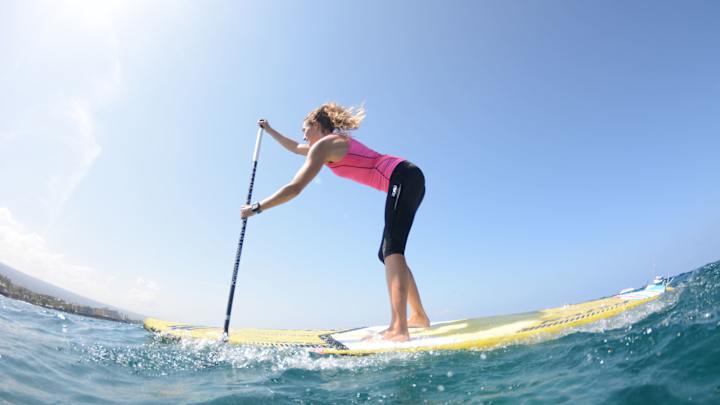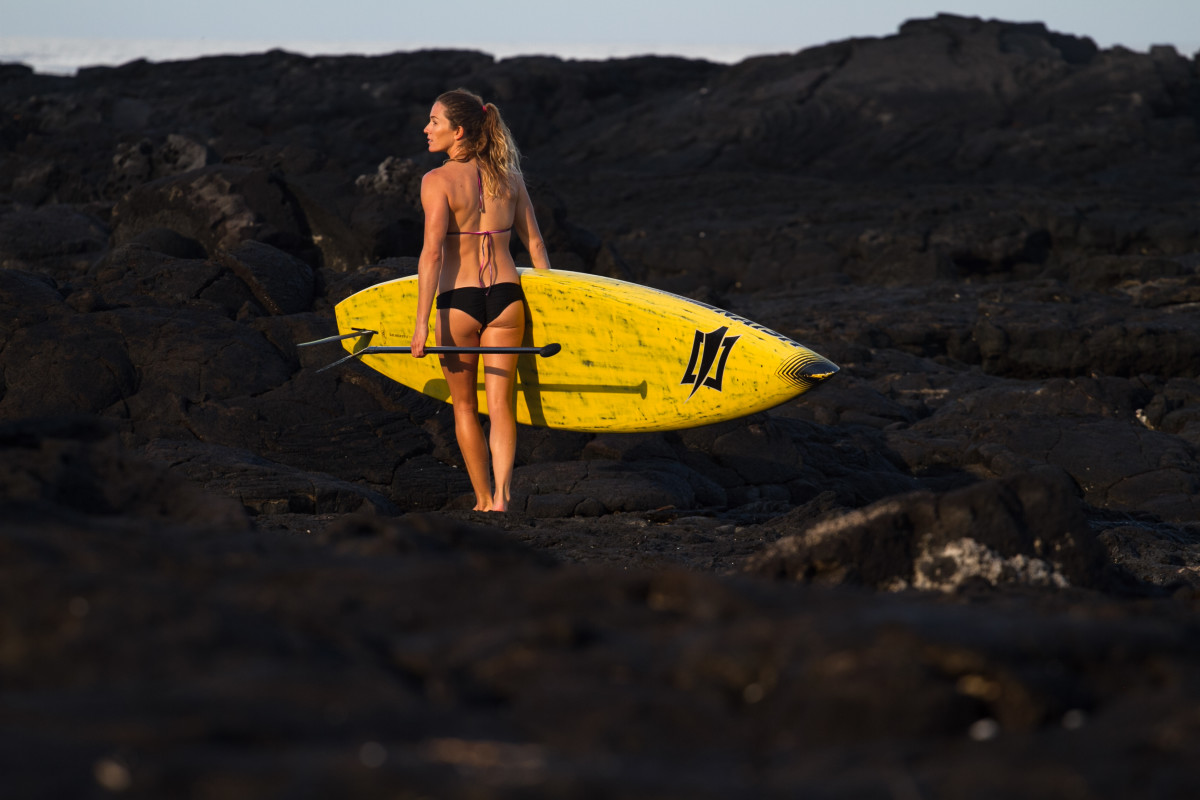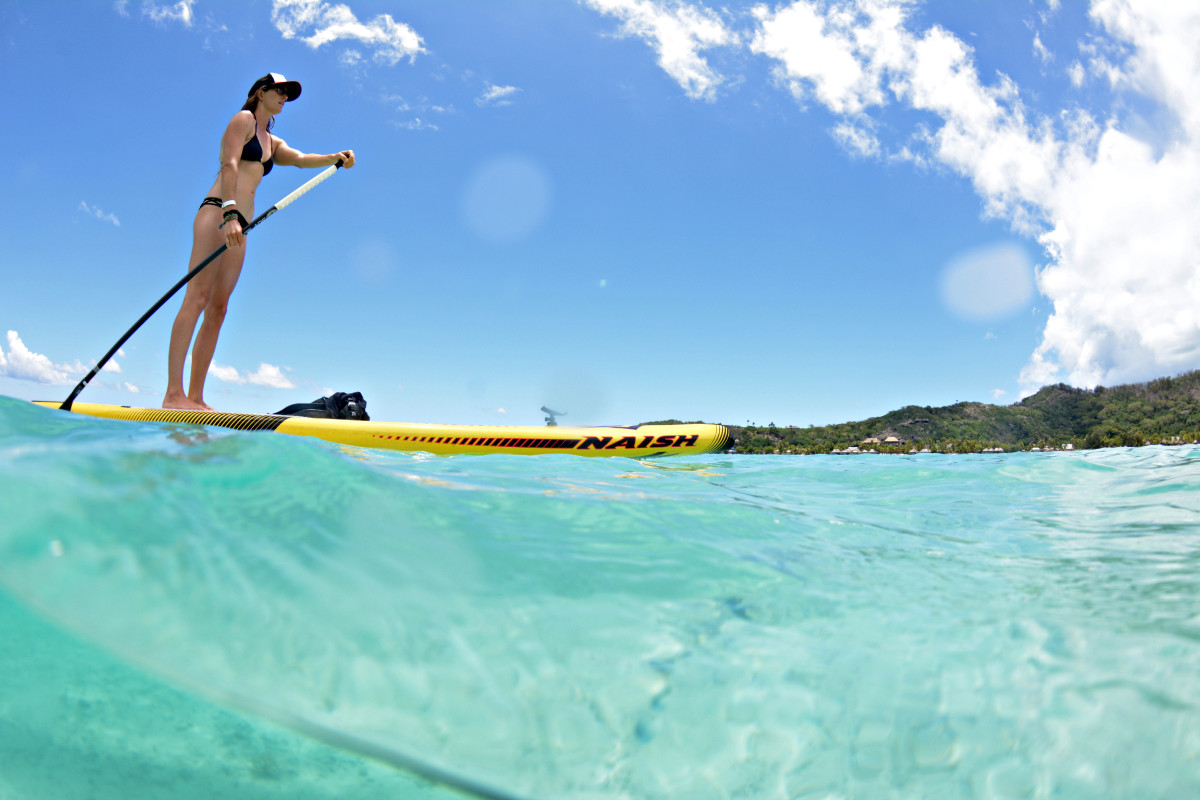Super SUP Athlete Jenny Kalmbach Shares on her Career, Growth

The Hawaiian Islands offer up some sublime after-work activities. The one Jenny Kalmbach glommed onto in 2005 was stand-up paddleboarding. The sport was new then, but by 2006 some after-work paddles turned into races entered. Then more races. Wins started piling up and now, roughly eight years later, the Costa Rican native who makes Kona, Hawaii, her home stands as one of the world’s most decorated stand-up paddleboarders.
“I think for me it was right timing with a lot of things,” she tells Edge about her start. “The sport was so new, we were learning a lot as we went. The equipment has changed so much and the training has changed dramatically.”
Coming into the sport would prove so different now — Olympians and athletes from other sports have migrated over — but when Kalmbach started out there was no information for her.
She “winged it.”
Her wings spread just dandy.
Kalmbach quickly took over the sport, winning famed races such as the 32-mile Molokai-to-Oahu race and the inaugural Battle of the Paddle en route to being named to numerous elite SUP athlete lists and, in 2011, the Female Paddler of the Year.

Now Kalmbach doesn’t spend the same amount of time on the water. She competes in about seven to 10 races a year, choosing fewer races, but the most competitive ones. “In year’s past I’d spend two months on the road and do a race every weekend,” she says. “I know people who do 30 races. For me, that would be too much. I just do the big ones, giving me time at home to train.”
To stay in paddleboarding shape, Kalmbach paddles two or three times a week and moves the rest of her training to the gym, a bike or running, now cross training more than paddling. “Stand up is a very repetitive sport and repetition can lead to injuries,” she says. Her endurance and sprint training lead her away from injuries, not toward them.
Early in her career, she hadn’t found workouts that got her where she wanted to be. But now, with quality over quantity, she has proven more fit and faster. The sport’s equipment growth has helped with that too. Long gone are the days of wooden paddles and big boards. With sponsors in the mix, she rides a Nash board that's 12 feet, six inches long and 24 inches wide, much smaller and easier for her small frame to maneuver than what she started on. In the open ocean, though, she moves to a 16-foot board. A small-bladed paddle helps her keep rhythm with her high-cadence stroke.
Kalmbach remembers a day in 2007 that would never happen now. A couple of friends had just pulled off a 20-mile paddle and she heard about it. “I wanted to try and do it,” she says. “It ended up being over five hours. I had one water pack and was so dehydrated and sick. It is funny looking back. Now I would build up to 20 miles and be taking electrolytes. It is funny to see what you learn.”
Learning new training skills and equipment tweaks remains important enough, but keeping her mindset focused proves crucial. “I think in the beginning, with [the sport] being so new, there was an excitement of [seeing] what can I accomplish,” she says. “What can I do to become a better paddler? Over the years, it has changed to how to maintain this level and, fortunately, still be competitive and grow as an athlete.”
Kalmbach won plenty early, but then did just “okay” for a bit until hitting the top of the podium again in 2013. “Every year equipment changes and you learn new things,” she says. “It is about evolving and continuing to push myself. The women’s stand up is getting a lot more competitive and we are close in a lot of races. It is exciting for us and a great sport for female athletes.”

To keep going in the sport as long as she has, she continues to focus on the major events. “To do well at those are the most satisfying,” she says. “I am grateful that I’m able to travel with support and sponsors and know I’m fortunate to be able to do that. The smaller schedule keeps it fresh.”
What was once a sweet after-work experience has morphed into a new way to experience life, whether winning races or finding the next best blue lagoon. “Stand up is a cool way to explore,” she says. “I grew up in Costa Rica around the water, but mostly on land doing soccer. Going back now with a paddleboard I would get to experience a place I have known for a long time with a different perspective. It is a cool way to go and see the world.”
Wings spread and water below.
Tim Newcomb covers stadiums, design and gear for Sports Illustrated. Follow him on Twitter at @tdnewcomb.
